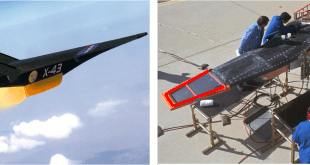U.S. Army small-arms experts recently laid out a blueprint of future small-arms goals that would equip infantry units with several new weapons, ranging from a new squad automatic rifle to a new shoulder-fired, anti-armor weapon. The service plans to equip infantry squads with lighter, more effective small arms.
The Army’s senior leadership has issued a directed requirement to field more than 1,000 Medium Anti-Armor Weapon Systems, or MAAWS, which is also known as the Carl Gustaf, said Lt. Col. Loyd Beal III, who runs Product Manager Crew Served Weapons.
The service plans to field the new M3A1 — the replacement for the current M3 Carl Gustaf, Beal said, adding that the goal is to have the first unit equipped in fiscal 2018. The M3 weighs 22 pounds and measures 42 inches long. The breech-loading M3 can reach out and hit enemy targets up to 1,000 meters away.
The new M3A1 is significantly lighter and shorter than the M3. It weighs 15 pounds and measures 39 3/8 inches long. The weight savings comes from a titanium liner and carbon-fiber wrapping, Saab officials said. The new system is also more ergonomic and features a cable system running along the top of the weapon to make it compatible with future battlefield technology, such as intelligent sighting systems for programmable ammunition, according to Saab officials.
The Army hopes to field a new Precision Sniper Rifle by fiscal 2021, Beal said. The PSR is a multi-caliber rifle that will enable sniper teams to engage man-sized targets out to 1,500 meters, he said. If all goes well, the PSR will replace the Army’s M2010 sniper rifle, chambered for .300 Winchester magnum, and the M107 sniper rifle, chambered for .50 caliber, Beal said.
The army also plans to develop XM25 Counter Defilade Target Engagement System, a “leap-ahead” weapon designed to give infantry units a decisive edge against enemies hiding behind cover.
The Army program is intended to cut the weight of its light machine gun by as much as 50 percent. The AAI Corp. weapon, by itself, weighs about nine pounds, compared to a 17-pound M249 squad automatic weapon
Textron has designed a new kind of ammunition could reduce by up to 40 percent the weight that the average soldier or marine carries in combat, which can easily exceed 100 pounds in combat. This “cased telescoped” ammo replaces brass bullet casings with polymer ones to achieve considerable weight savings, making U.S. troops deadlier in the process.
XM25 Counter Defilade Target Engagement System
The XM25 Counter Defilade Target Engagement System enables the small unit and individual soldier to engage defilade targets by providing a 25mm air bursting capability in all operational environments. Nicknamed “The Punisher” by troops who’ve used it in Afghanistan, the XM25 is an individually fired, semi-automatic, soldier-portable weapon system.
An individual Soldier employing basic rifle marksmanship skills can effectively engage exposed or defilade targets in just seconds out to 700 meters. The system allows the Soldier to engage targets quickly and accurately. It produces an adjusted aimpoint based on range, environmental factors and user inputs. The target acquisition/fire control integrates thermal capability with direct-view optics, laser rangefinder, compass, fuze setter,ballistic computer and an internal display.
The XM25 reduces the reliance of small units on non-organic assets (mortars, artillery and air support) and the need to compete for priority of fires when time is critical. In addition to air bursting ammunition, a family of ammunition supports other missions. They could include armor-piercing and nonlethal scenarios.
Textron’s LSAT system reduces ammunition weight, making the soldier’s load easier to carry.
Unlike traditional brass casing technology, cased telescope technology seats a bullet inside a polymer shell casing, fully enclosing it in plastic. The use of polymer results in a 35 to 40 percent weight reduction. Another benefit is that the overall length of the polymer encased round is approximately 30 percent shorter than the brass-encased round.
Cased telescoped bullets can’t be used in weapons that use brass shell casings, so Textron has developed two prototype machine guns to show off the technology. There’s one in 5.56-millimeter as an alternative to the U.S. Military’s M249 Light Machine Gun and one in 7.62-millimeter (see above) as an alternative to the M240L Medium Machine Gun.
In tests at the Kvarn Land Warfare Center in Sweden, Swedish testers fired 5,000 rounds of ammunition and discovered the 5.56 CT System achieved a 20 percent tighter shot grouping and required 30 percent less ammo to accomplish fire missions over the existing Swedish light machine gun. Swedish testers also rated it higher than Sweden’s existing light machine gun in ease of maintenance, trigger operation, recoil reduction, and burst fire control.
US Army Developing Safer, But More Lethal Hand Grenade
The U.S. Army is currently designing its first lethal hand grenade since the Vietnam War. Maj. Jason Bohannon told Army Times, the service has collected feedback from soldiers and determined that the M67, which has been a “workhorse” for the Army for decades, has limitations in “restricted terrain.”
He said it’s also not as safe as it could be, adding “A lot’s changed since 1968 in terms of what the Army deems a safe munition.” As such, the Army has been working on a new grenade that’s less likely to accidentally explode, but that can fragment farther in dense vegetation like tall grass and wooded areas.
The Enhanced Tactical Multi-Purpose grenade, as it’s being called, will be able to switch between blast and frag grenade and will also bring back concussion mode.
The Army said that the technology will not be ready for the battlefield until the late 2020s.
References and Resources also include:
http://newsbeatsocial.com/2017/08/28/us-army-developing-safer-lethal-hand-grenade/
http://www.military.com/daily-news/2017/05/09/army-maps-out-future-small-arms-programs.html
 International Defense Security & Technology Your trusted Source for News, Research and Analysis
International Defense Security & Technology Your trusted Source for News, Research and Analysis
